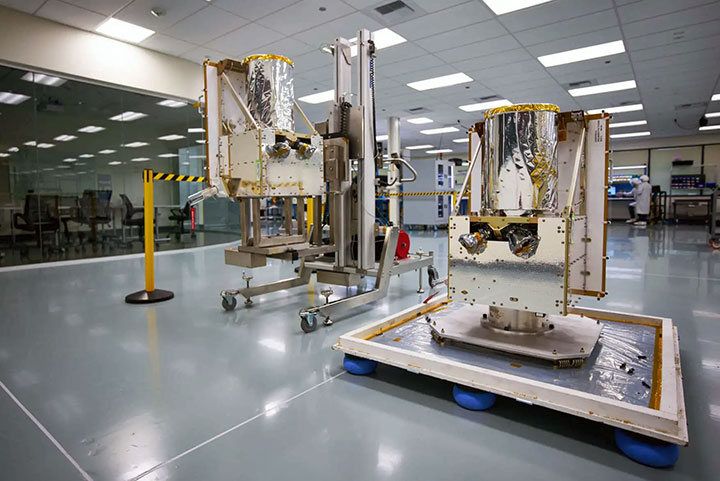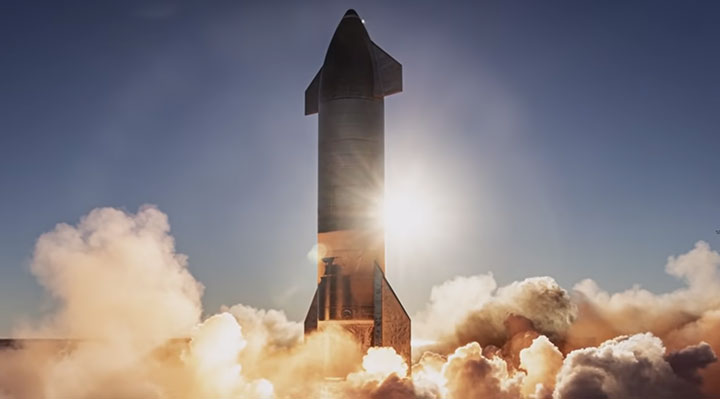ALEXANDRIA, Va. — There were reasons to be optimistic about the current and projected growth of the smallsat market as the 2023 SmallSat Symposium got underway in Silicon Valley. The world witnessed a record 186 launches in 2022 with smallsats accounting for 95% of the 2,521 spacecraft deployed. Steady demand signals from governments and growing commercial applications suggest a continued uptick in the smallsat market in 2023, but it will not be without challenges.
Compared to the bullishness of previous years, industry experts and economists are clear-eyed in acknowledging the potential pitfalls, from macroeconomic headwinds and supply chains to overcapacity and expanding the customer base.
During a panel discussion at the SmallSat Symposium, Shalini Bhatia, principal at Deloitte Consulting, noted the proliferation of NGSO players in recent years. “The reality is, not everybody’s going to win when there are a thousand-plus players in that market,” she said.
While reluctant to predict the “first casualty” of 2023, Fletcher Franklin, senior program manager at BryceTech, pointed to the long list of players in the remote sensing, noting “a lot of providers [are] not on orbit yet.”
The growth of the smallsat market has created a kind of Goldilocks scenario. Some say it’s too hot, with too much extra capacity and immature markets. Others anticipate governments and commercial consumers will quickly absorb new satellite services, driving demand beyond current capacity. Time will determine where the balance is just right.
Expanding the Consumer Market
Despite near-term hurdles, the overall satellite market has a strong growth trajectory. Euroconsult projects 2,500 satellites will be launched every year on average over the next decade. Government spending continues to be the largest revenue driver, but smallsat constellations run by commercial operators dominate—and will continue to dominate—in terms of the number of spacecraft.
This coincides with the expanded use of satellite for telecommunications, broadband connectivity, IoT and commercial imaging. Dr. Ward Hanson, a Stanford University lecturer in economics, was upbeat about the longer-term impact commercial satellite will have in enabling consumer applications and uses. “I think the insight you get from consumers is it always takes longer to adopt the technology than you think and you go further than you expected,” he said.
Sita Sonty, partner and associate director of aerospace and defense at Boston Consulting Group, acknowledged the growing interest in space-based technologies among large industries and capital markets, but warned that those markets will not be created by accident. “If producers of that technology don’t know how to sell it, it won’t sell,” she said. “This is not a hypothetical. This is an industry-wide area of growth that, if not addressed in the very near term, will not enable winners.”
Manufacturing to Meet Demand
In addition to demand signals from both government and commercial operators, manufacturing capacity continues to be a core driver of the smallsat market. Heading into 2023, smallsat manufacturer LeoStella, a joint venture between Thales Alenia Space and BlackSky, has seen a steady stream of customers looking for spacecraft.
 Image shows two LeoStella satellites delivered to BlackSky at New Zealand’s Rock Lab Launch Complex 1 in May 2022. (Source: LeoStella)
Image shows two LeoStella satellites delivered to BlackSky at New Zealand’s Rock Lab Launch Complex 1 in May 2022. (Source: LeoStella)
“The market demand has not dried up at all,” LeoStella VP of Business Development Mike Kaplan told Constellations. “What I see are challenges for satellite manufacturers to meet that market demand. … Companies are having a hard time staffing to meet the demand need they’re seeing for these orders.”
While some manufacturers struggle to stay ahead, LeoStella has found success in a lean, highly digital organization, a mature production facility and modular design approach that has yielded satellites with 99% mission availability.
Modular designs, additive manufacturing and computer-aided designs have improved production efficiencies and the use of commercial-off-the-shelf (COTS) components allow producers to broaden their base of suppliers. Yet, even as some companies struggle to keep up with orders, there are questions about how much capacity the market can absorb. Euroconsult recently warned that the “risk of satellite manufacturing overcapacity is strong.”
At least a half dozen manufacturers unveiled new or expanded production facilities in 2022, with some capable of churning out hundreds of satellites per year. Mega-factories have come online with a combined capacity of up to ten times projected demand. At the same time, the majority of growth of commercial smallsat constellations will occur within vertically integrated companies, such as Starlink, OneWeb and Amazon Kuiper or state-owned enterprises, like China’s SatNet.
Launch Bottlenecks and Rideshare
Launches in 2022 were led by the U.S. SpaceX Falcon 9, China’s Long March 2D and Russia’s VVKO Soyuz. Last year’s record will likely be shattered again in 2023 as companies including SpaceX, Rocket Lab, Ad Astra, Relativity Space, ArianeGroup and others plan to bring new rockets online.
“Even though we see lots of news about emerging launch companies, launches become the bottleneck for the growth of the smallsat industry per se,” Kaplan noted. “There are not enough launches to go around to satisfy all the satellites that are planned to be launched over the next several years.”
 SpaceX’s Starship is a 50-meter-tall (150 feet) rocket designed for rideshare missions and to carry humans and cargo to the moon. Starship was selected by NASA to send astronauts to the moon as part of the Artemis program. (Source: NASA/SpaceX)
SpaceX’s Starship is a 50-meter-tall (150 feet) rocket designed for rideshare missions and to carry humans and cargo to the moon. Starship was selected by NASA to send astronauts to the moon as part of the Artemis program. (Source: NASA/SpaceX)
Small launchers, designed to carry up to 2,000 kg into Low Earth Orbit, have come online in recent years with more underway. While they promise to add capacity and alleviate launch backlogs, there are doubts about how much these smaller vehicles will impact the smallsat market—particularly as rideshares are taking off.
“I believe that the future is rideshare. You just cannot compete with rideshare,” said Dr. Abhishek Tripathi, director of mission operations at the U.C. Berkeley Space Sciences Lab, estimating the market can only support “one maybe two” small launchers.
SpaceX is aiming to deploy its Starship Super Heavy rocket as soon as March, according to CEO Elon Musk. The spacecraft is designed to carry up to 150 metric tons into Low Earth Orbit and could reshape the launch landscape.
To date, the impact of small launch vehicles on the smallsat industry has been negligible. Last year saw greater activity from small launch vehicles, but according to BryceTech, there was only a 1% increase in the number of small launchers carrying smallsats compared to 2021.
“If you are a smallsat maker in this room and you have not been having war room meetings at your company, preparing for… how you’re going to change your business model to work with Starship, you’re going to be in trouble,” Tripathi said. “The capacity that comes online in the next couple of years is just going to dwarf the capacity you have now.”
Explore More:
A Diplomatic and More Economic Space: 2023 Outlook with Sita Sonty
Satellite Manufacturers Adapt Supply Chains Amid Demand for Mass Production
Podcast: The Space Ecosystem and Unique Opportunities in SmallSat
